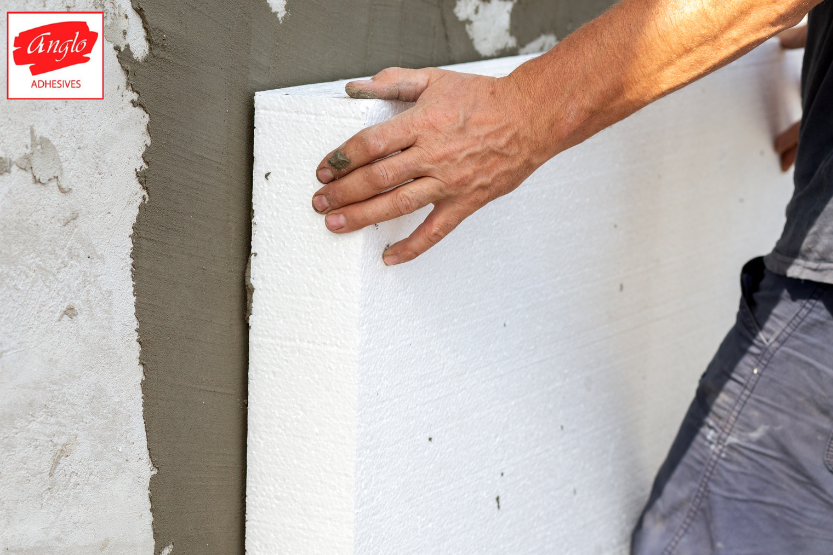Blog
Adhesive Bonding with High Impact Polystyrene Applications

High impact polystyrene (HIPS) is a versatile thermoplastic commonly used in a wide range of applications. Its impact resistance, rigidity, and ease of processing make it an ideal material for various industries. Furthermore, adhesive bonding is a crucial technique for joining HIPS components, providing a strong and durable connection. This article will explore the adhesive bonding with high impact polystyrene applications and discuss some of its key applications.
Understanding High Impact Polystyrene Applications
HIPS consists of a copolymer of styrene and butadiene, offering a balance of strength and toughness. Manufacturers widely use HIPS in applications such as consumer goods, packaging, automotive components, and construction materials. Moreover, the surface properties of HIPS play a vital role in adhesive bonding. Also, the surface energy of HIPS influences the wettability of adhesives, which affects the bond strength.
Adhesive Selection for High Impact Polystyrene Applications
Choosing the right adhesive is crucial for successful bonding with HIPS. Factors to consider include the type of adhesive, its chemical composition, and its compatibility with HIPS. Common adhesives used for HIPS bonding include:
- Solvent-based adhesives: These adhesives dissolve the surface of the HIPS, creating a strong bond. However, solvent-based adhesives can emit volatile organic compounds (VOCs), which can be harmful to the environment.
- Water-based adhesives: These adhesives are environmentally friendly and offer good adhesion to HIPS. In addition, they are often used in applications where VOC emissions are a concern.
- Hot melt adhesives: These adhesives are applied as hot liquids and solidify upon cooling, providing a quick and efficient bonding method. Furthermore, hot melt adhesives are commonly used in packaging and labelling applications.
- Reactive adhesives: These adhesives undergo a chemical reaction with the HIPS surface, forming a strong bond. Thus, reactive adhesives are often used in structural applications where high bond strength is required.
Surface Preparation for HIPS Bonding
Proper surface preparation is a critical step in ensuring the success of adhesive bonding with high impact polystyrene applications. Hence, a clean and properly prepared surface provides an ideal substrate for the adhesive to adhere to, maximising bond strength and durability.
Cleaning
- Solvent Cleaning: Use a suitable solvent, such as acetone or isopropyl alcohol, to remove dirt, grease, and oil from the HIPS surfaces. Also, ensure that the solvent is compatible with the adhesive being used.
- Detergent Cleaning: For heavy contamination, a mild detergent solution can be used. However, it is essential to rinse thoroughly to remove any residue that may interfere with the adhesive.
Mechanical Surface Treatment
- Sanding: Sanding the HIPS surface with progressively finer-grit sandpaper can create a microporous surface. Thus, increasing the adhesive’s contact area and improving adhesion.
- Abrasion: Abrasive blasting techniques, such as sandblasting or bead blasting, can be used to create a rough surface texture that enhances adhesion.
- Flame Treatment: Applying a flame to the HIPS surface can oxidise the surface, improving its wettability and promoting adhesive adhesion.
Considerations
- Surface Roughness: The desired level of surface roughness will depend on the specific adhesive and application. Additionally, excessive roughness can lead to increased adhesive consumption and potential voids in the bond line.
- Contamination: Avoid recontamination of the prepared surfaces after cleaning and treatment. Hence, handle the surfaces carefully to prevent the introduction of new contaminants.
- Adhesive Compatibility: Ensure that the chosen cleaning and surface treatment methods are compatible with the adhesive being used. Moreover, some adhesives may be sensitive to certain solvents or surface treatments.
Bonding Techniques
There are several bonding techniques used with HIPS, including:
- Manual application: Adhesives can be applied manually using brushes, rollers, or spray guns.
- Automated application: For large-scale production, adhesives can be applied using automated dispensing equipment.
- Pressure application: Applying pressure to the bonded surfaces can help ensure proper contact and improve bond strength.
Applications of Adhesive Bonding with HIPS
Adhesive bonding with HIPS is used in a wide range of industries and applications, including:
- Packaging: HIPS is commonly used in packaging materials such as trays, containers, and blister packs. Also, adhesive bonding is used to assemble these packaging components.
- Consumer goods: HIPS is used in various consumer products, including toys, appliances, and electronics. In addition, adhesive bonding is used to join components and create finished products.
- Automotive components: HIPS is used in automotive interior components such as dashboards, door panels, and instrument panels. Further, adhesive bonding is used to assemble these components and provide a durable and aesthetically pleasing finish.
- Construction materials: HIPS is used in construction materials such as insulation panels and cladding. So, adhesive bonding is used to join these materials and create structural elements.
Bonding High Impact Polystyrene Applications with Anglo Adhesives
Adhesive bonding is a highly adaptable method for connecting HIPS (high-impact polystyrene) components, delivering both robust and enduring results. To maximise its effectiveness, it’s crucial to choose the right adhesive, meticulously prepare the surfaces, and use the correct bonding techniques. This is where Anglo Adhesives come in. With our extensive range of high-performance adhesives and deep industry expertise, we can guide you in selecting the ideal product and application process. Our support ensures superior bond strength and reliability in your HIPS applications, streamlining the bonding process, enhancing performance, and achieving long-lasting results tailored to your specific needs.